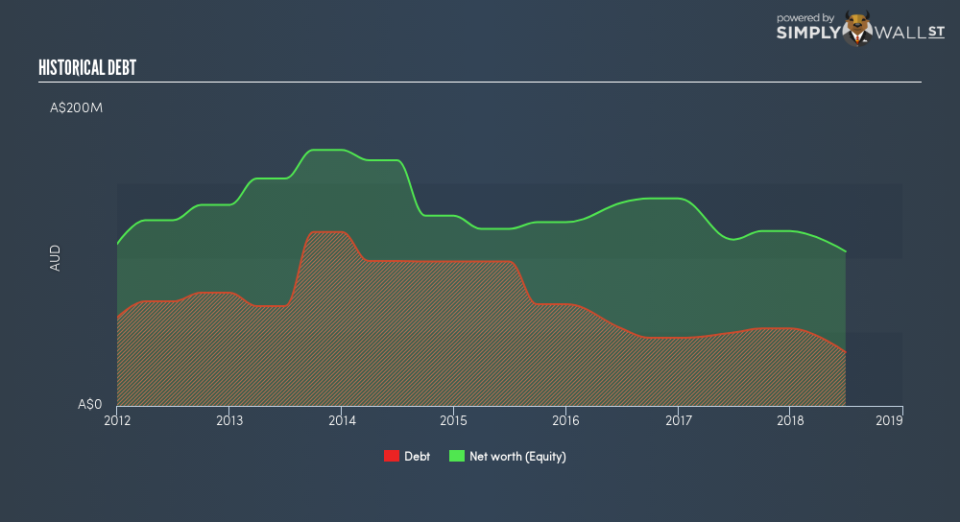What Investors Should Know About Austin Engineering Limited’s (ASX:ANG) Financial Strength

Investors are always looking for growth in small-cap stocks like Austin Engineering Limited (ASX:ANG), with a market cap of AU$113m. However, an important fact which most ignore is: how financially healthy is the business? Since ANG is loss-making right now, it’s crucial to assess the current state of its operations and pathway to profitability. Here are a few basic checks that are good enough to have a broad overview of the company’s financial strength. However, given that I have not delve into the company-specifics, I recommend you dig deeper yourself into ANG here.
How does ANG’s operating cash flow stack up against its debt?
ANG’s debt levels have fallen from AU$49m to AU$36m over the last 12 months , which also accounts for long term debt. With this debt repayment, ANG currently has AU$5.6m remaining in cash and short-term investments for investing into the business. Moreover, ANG has produced AU$1.2m in operating cash flow during the same period of time, leading to an operating cash to total debt ratio of 3.3%, indicating that ANG’s operating cash is not sufficient to cover its debt. This ratio can also be interpreted as a measure of efficiency for unprofitable companies as traditional metrics such as return on asset (ROA) requires positive earnings. In ANG’s case, it is able to generate 0.033x cash from its debt capital.
Can ANG meet its short-term obligations with the cash in hand?
Looking at ANG’s AU$106m in current liabilities, it appears that the company has been able to meet these commitments with a current assets level of AU$131m, leading to a 1.23x current account ratio. Generally, for Machinery companies, this is a reasonable ratio as there’s enough of a cash buffer without holding too much capital in low return investments.
Does ANG face the risk of succumbing to its debt-load?
With a debt-to-equity ratio of 35%, ANG’s debt level may be seen as prudent. ANG is not taking on too much debt commitment, which may be constraining for future growth. Risk around debt is very low for ANG, and the company also has the ability and headroom to increase debt if needed going forward.
Next Steps:
ANG has demonstrated its ability to generate sufficient levels of cash flow, while its debt hovers at an appropriate level. Furthermore, the company will be able to pay all of its upcoming liabilities from its current short-term assets. This is only a rough assessment of financial health, and I’m sure ANG has company-specific issues impacting its capital structure decisions. I recommend you continue to research Austin Engineering to get a more holistic view of the stock by looking at:
Future Outlook: What are well-informed industry analysts predicting for ANG’s future growth? Take a look at our free research report of analyst consensus for ANG’s outlook.
Historical Performance: What has ANG’s returns been like over the past? Go into more detail in the past track record analysis and take a look at the free visual representations of our analysis for more clarity.
Other High-Performing Stocks: Are there other stocks that provide better prospects with proven track records? Explore our free list of these great stocks here.
To help readers see past the short term volatility of the financial market, we aim to bring you a long-term focused research analysis purely driven by fundamental data. Note that our analysis does not factor in the latest price-sensitive company announcements.
The author is an independent contributor and at the time of publication had no position in the stocks mentioned. For errors that warrant correction please contact the editor at editorial-team@simplywallst.com.

 Yahoo Finance
Yahoo Finance 
